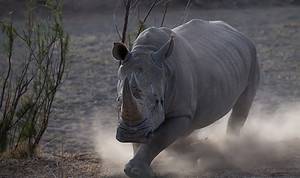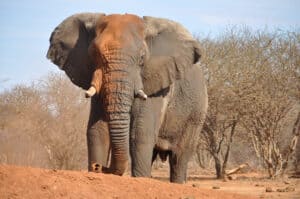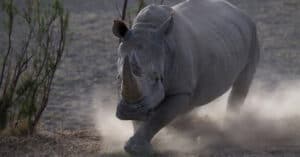The horns of a rhino are probably its most distinctive body part. However, this uniqueness doesn’t end here. You’ve probably already heard about the rhino horn trade and how much rhino horns cost, right? But why are they so valued? What makes them so special that they are even stolen from museums? And most importantly, how does their trade affect the rhinoceros population? Let’s find out!
What Do Rhino Horns Look Like?
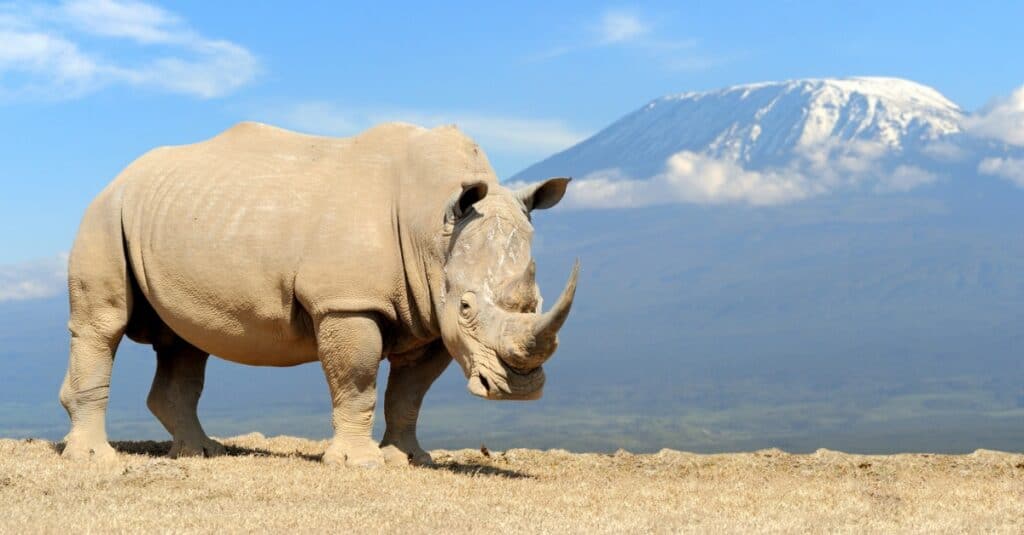
White rhinos have two horns on their snouts.
©iStock.com/Byrdyak
Rhino horns are different in various rhino species. White rhinos have two horns on their snouts. The front one is larger and measures approximately 35 inches in length, although some individuals’ horns reach 59 inches.
Generally, black rhinos have larger front horns that, on average, measure 19.7 inches long but can sometimes reach 55 inches. Some black rhinos may have a third smaller horn. The South African black rhino variation has a posterior horn that is either longer than or equal to the anterior horn.
As opposed to other rhino species, Indian rhinos have only one smaller horn, usually measuring between 7.8 and 23.6 inches long. Another rhino species with only one horn is the Javan rhino. Male Javan rhino horns reach roughly 10.2 inches long. Female Java rhinos may not even have horns.
Sumatran rhinos have two horns, the front one being larger. The front horn can reach around 9.8 – 31.1 inches, while the smaller one rarely grows longer than 3.9 inches. Male Sumatran rhinos have larger horns than females.
What Are Rhino Horns Made Of?
At first glance, rhino horns look like bony structures. However, they consist of a fibrous protein called keratin, which our hair and nails consist of. More specifically, rhino horns grow in layers and consist of keratinized skin cells. The center of the horn is made of calcium and melanin layers.
What Are Rhino Horns Used For?
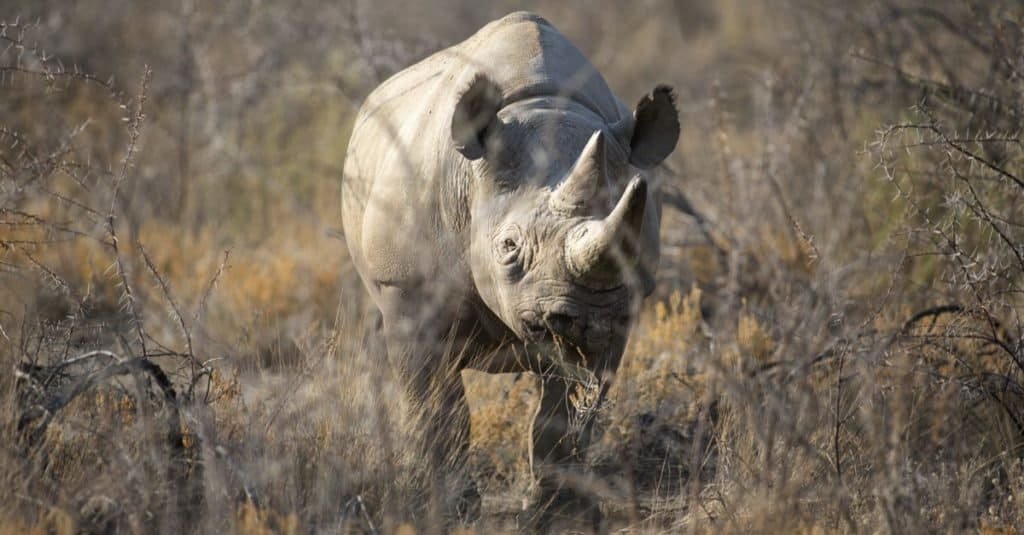
Rhino horns are widely used in traditional Asian medicine, as well as for dagger handles in Oman and Yemen.
©2630ben/Shutterstock.com
Rhino horns may seem like just horns, parts of their bodies, right? Nothing special. What if we told you that a rhino horn may cost up to half a million dollars? What if we told you that rhino poaching (illegal hunting, capturing, transporting, or killing rhinos) had reached extraordinary levels in the last two decades? But what makes them so special? Let’s find out!
Rhino horns consist of keratinous mineralized compartments. So they are valued for their keratin, the same substance that makes up our hair and nails. These horns are widely used in traditional Asian medicine, as well as for dagger handles in Oman and Yemen. Moreover, people once believed they could use rhino horns to detect poisoned liquids and purify water.
Rhino horn elixirs were first used more than 1,800 years ago in traditional Chinese medicine. They were broadly prescribed to treat fever and liver problems. By the end of the 20th century, the rhino situation started improving, as trade bans were imposed among numerous Asian countries.
In 2008, however, rhino poaching registered an enormous rise. Eighty-three rhinos were killed in 2008, and 122 in 2009. These numbers are enormous compared to how many were killed between 1990 and 2007! If in 2009, there were 0.4 rhinos killed per day, this rate reached 1.6 in 2012!
This huge rhino horn demand was caused by a rumor rapidly spreading in Vietnam that the horns could cure cancer. However, there’s no official record that would indicate they have anything to do with curing cancer. Since they were first used in Chinese traditional medicine, this information was checked with the UK Association of Traditional Chinese Medicine. The president of this association confirmed that there’s no record of rhino horns curing cancers in any medical texts that tell everything about two millennia of Chinese traditional medicine.
Other rhino horn rumors include that they can be used as party drugs and aphrodisiacs, which, of course, have no basis in traditional Chinese medicine.
How Far Does the Rhino Horn Trade Go?
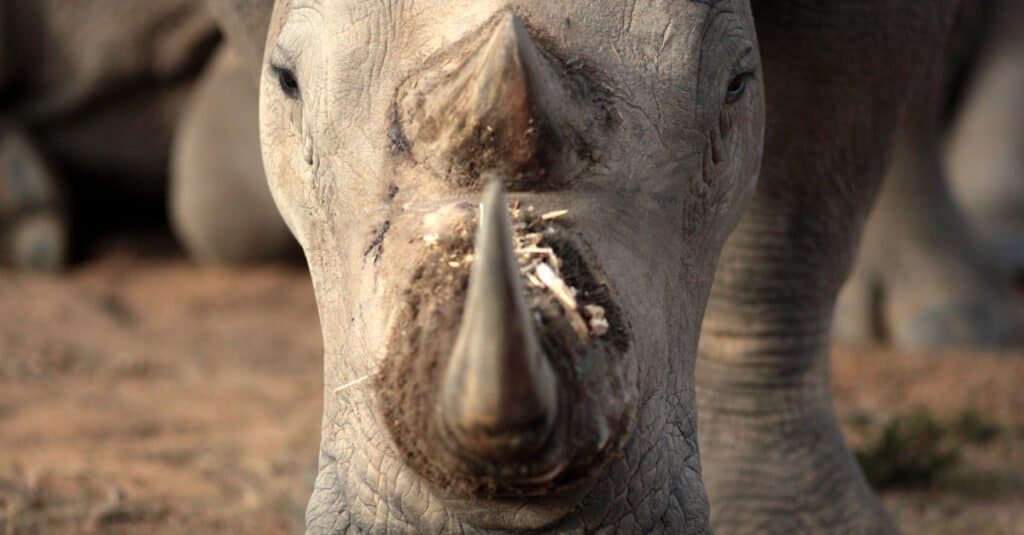
Rhino horns worth more than $500,000 were stolen from a National Museum storage facility.
©JONATHAN PLEDGER/Shutterstock.com
Would you believe us if we told you that rhino horns worth more than $500,000 were stolen from a National Museum storage facility? Moreover, roughly 30 Europol operations and 20 investigations were launched to locate the criminal gang responsible for the theft. Police forces from across Europe were mobilized to help.
Before this theft, another one happened in 2011, when two men stole an 18-inch rhino horn and a black rhino skull from Ipswich Museum. Needless to say, many other rhino horn thefts have been registered, indicating that things got so out of control that their value was equal to or even higher than gold!
How Did the Rhino Horn Trade Affect the Rhino Population?
At the beginning of the last century, Africa and Asia hosted half a million rhinos. This number dropped significantly by 1970, reaching 70,000. In 1977, the Convention on International Trade in Endangered Species of Wild Fauna and Flora declared international trade in rhinoceros horn illegal. The domestic sale of rhino horns in South Africa was banned in 2009.
Nowadays, there are only 27,000 rhinoceros left in the wild. Black rhinos, Javan rhinos, and Sumatran rhinos are critically endangered. There’s only one small population of Javan rhinos living in a national park on the Indonesian island of Java. It is considered Earth’s rarest large mammal.
The most painful thing about the horn trade is that rhino horns can be removed without killing the animal. However, animal cruelty’s gone so far that even the unborn baby rhinos were taken out of their mother’s bellies for their horn stumps, as Rachel Nuwer wrote in her book about wildlife trafficking.
However, many conservation efforts were proposed. One is horn removal. In some regions, rhinos were tranquilized and had their horns removed. Another method is introducing a mixture into their horns that is safe for rhinos but toxic for humans. However, this method has been highly criticized with regard to its morality. Another method yet to be implemented is creating an artificial substitute for rhino horns.
Do Rhino Horns Grow Back?
Yes, rhino horns grow back. That’s why removing horns to prevent rhino poaching wasn’t such a good idea. It would’ve kept them safe only for about three years until new horns would’ve grown back. In “Poached: Inside the Dark World of Wildlife Trafficking,” Rachel Love Nuwer states that a 35-40-year-old rhino would produce roughly 130 pounds of horn if kept on an 18-month trimming schedule.
How Much Do Rhino Horns Cost?
Some sources say rhino horns cost approximately $65,000 per 2.2 pounds (1 kg). Other sources list a price of up to $20,000 for 2.2 pounds of African rhino horns and $400,000 for 2.2 pounds of Asian rhino horns.
Up Next:
- Are Black Rhinos Extinct?
- How Many White Rhinos Are Left In The World?
- Are Rhinos Extinct: The Conservation Status of Every Rhino Species
The photo featured at the top of this post is © JONATHAN PLEDGER/Shutterstock.com
Sources
- Independent.ie, Available here: https://www.independent.ie/irish-news/europol-probe-into-crime-gang-linked-to-500k-rhino-horn-heist-29211791.html
- World Wildlife Fund, Available here: https://www.worldwildlife.org/species/rhino
- ifaw, Available here: https://www.ifaw.org/international/journal/why-some-creative-poaching-solutions-fail
- Save The Rhino, Available here: https://www.savetherhino.org/our-work/protecting-rhinos/what-is-rhino-horn-made-of/
Thank you for reading! Have some feedback for us? Contact the AZ Animals editorial team.



